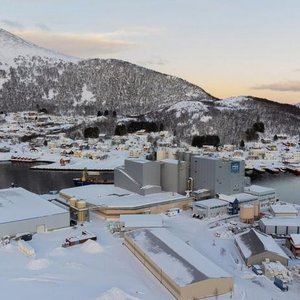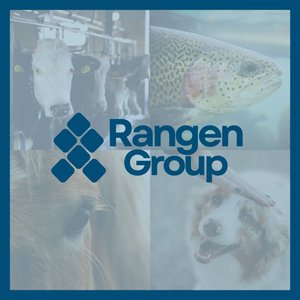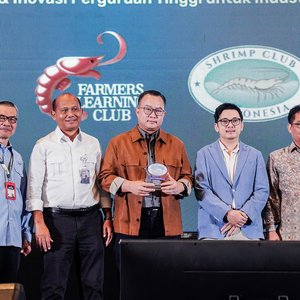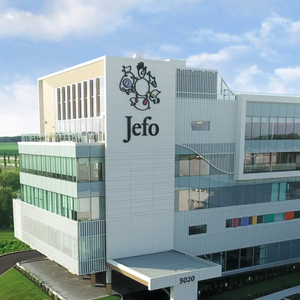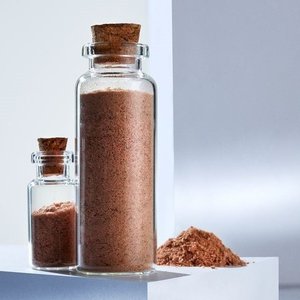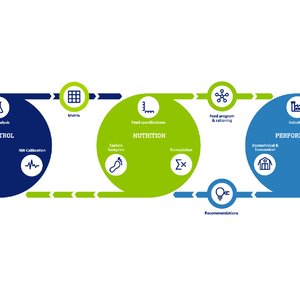In Norway, nutrients and contaminants are routinely monitored in commercially produced feed materials, fish feed and farmed Atlantic salmon (Salmo salar). Summarizing recent findings, researchers at the Norwegian Institute of Marine Research presented monitoring data collected over a 16-year period (2006-2021) on various nutrients and contaminants in fish feed materials, fish feed and farmed Atlantic salmon.
The data include measurements of fatty acids, vitamin D, selenium, POPs and the non-essential elements mercury, cadmium, arsenic and lead. Additionally, nutrient and contaminant levels in Atlantic salmon were evaluated in terms of nutritional value and food safety. Nearly 7,000 samples of salmon fillet and nearly 1,000 samples of salmon feed were analyzed from 2006 to 2021.
The results showed parallel trends in the concentrations of several nutrients and contaminants in both fish feed and Atlantic salmon fillets during the study period. Concentrations of long-chain omega-3 fatty acids—eicosapentaenoic acid (EPA), docosahexaenoic acid (DHA), and docosapentaenoic acid (DPA)—declined over time, while levels of alpha-linolenic acid, linoleic acid, and oleic acid increased in both feed and fillets.
"From 2006 to 2014, there were major shifts in feed composition, with more plant-based and fewer marine ingredients. Naturally, this led to changes in the fatty acid and contaminant profiles of fish fillets," said Rita Hannisdal, a marine scientist at the Institute of Marine Research. "Looking at the full period from 2006 to 2021, we see similar changes in several nutrients and contaminants in both fish feed and salmon fillets."
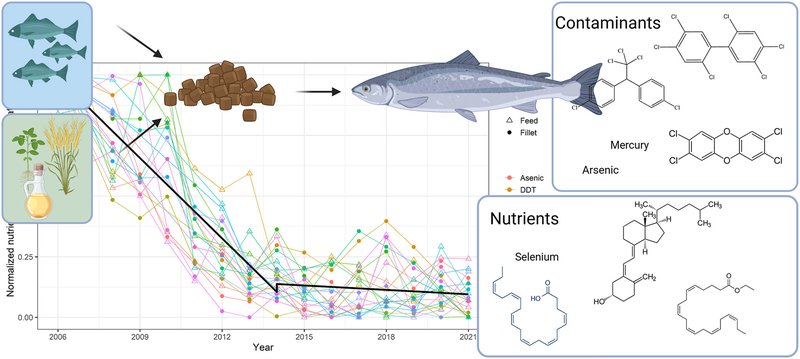
Credits: Rita Hannisdal et al.
Concentrations of several contaminants—including polychlorinated dibenzo-p-dioxins and dibenzofurans (dioxins), dioxin-like PCBs (dl-PCBs), non-dioxin-like indicator PCBs (PCB-6), DDT, and mercury—declined in both feed and salmon fillets.
The most significant changes occurred between 2006 and 2014, while levels remained relatively stable from 2014 to 2021.
“Although levels of some nutrients declined, farmed Atlantic salmon fillet remains a good source of EPA, DHA, vitamin D, and selenium. The reduced levels of contaminants such as dioxins, dl-PCBs, and mercury have lowered the health risks associated with consuming salmon,” researchers concluded.
This unique dataset on farmed fish is available through Sjømatdata.
Reference:
Rita Hannisdal, Ole Jakob Nøstbakken, Marc H.G. Berntssen, Arne Duinker, Quang Tri Ho, Marian Kjellevold, Annette Bernhard, Livar Frøyland, Amund Maage, Anne-Katrine Lundebye, Nini H. Sissener, Lisbeth Dahl, Robin Ørnsrud, Veronika Sele. Nutrients and contaminants in farmed Atlantic salmon (Salmo salar) fillet and fish feed from 2006 to 2021. Journal of Agriculture and Food Research, Volume 21, 2025, 101933, ISSN 2666-1543, https://doi.org/10.1016/j.jafr.2025.101933




